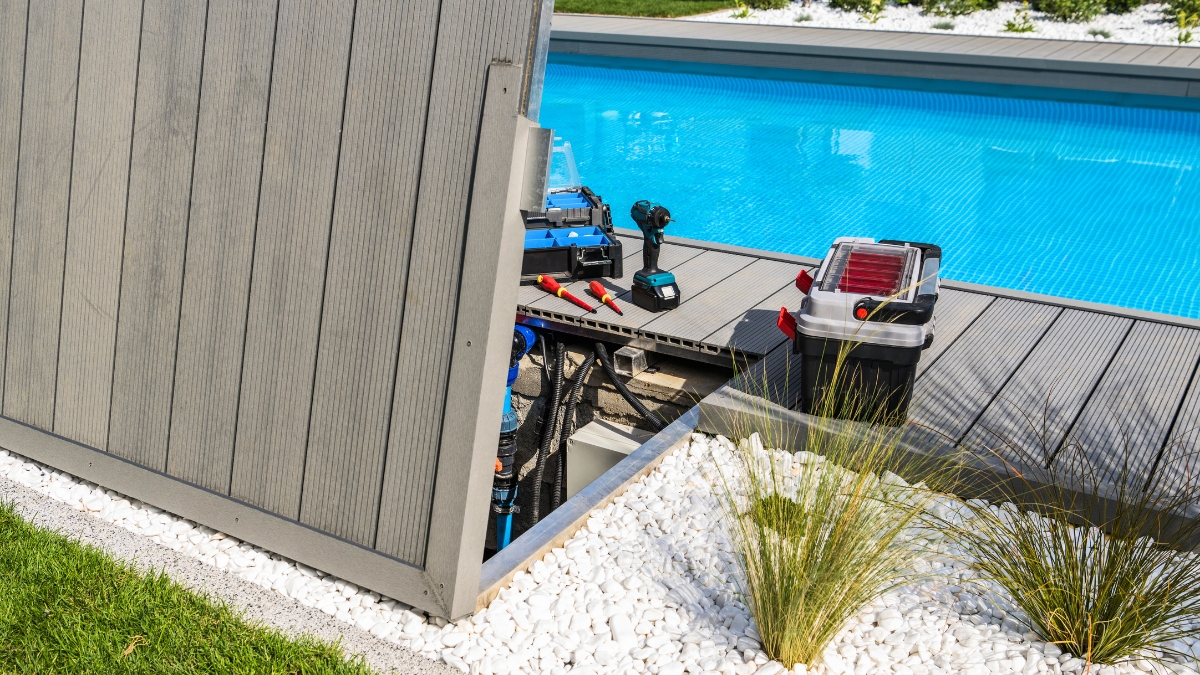Leak detection is an essential aspect of pool maintenance and repair, especially considering that a staggering 95% of pool leaks occur within a three-foot radius of the pool itself. This fact emphasizes the need for pool owners and maintenance teams to pay close attention to the immediate surroundings of their pools to prevent and address leaks efficiently. In this blog, we’ll delve into why leaks are so prevalent in this area, how to detect them, and steps to prevent such leaks, especially for inground pools like those built by Sunseeker Pool and Spa in Florida, USA.
Why Do Most Pool Leaks Occur Within a Three-Foot Radius?
The area within three feet of the pool is crucial because it encompasses several key components of the pool’s structure and plumbing system. These components include the skimmer, return lines, main drains, and the pool shell itself. Leaks in these areas can be due to various reasons such as ground movement, deterioration over time, improper installation, or damage.
- Skimmer and Return Lines: The skimmer and return lines are integral for circulating water back into the pool after it has been filtered. These lines are often embedded in the pool’s concrete or gunite structure and can develop cracks or separations due to shifting ground or settling of the pool structure.
- Main Drains: Located at the bottom of the pool, main drains are susceptible to leaks, especially if the sealant around them deteriorates or if there is a crack in the pool foundation.
- Pool Shell: The pool shell itself can develop cracks, especially in areas where the concrete or gunite is thin or has been weakened over time. These cracks are more likely to occur near the surface but can also be found deeper within the pool’s structure.
Detecting Leaks in the Critical Zone:
Detecting leaks within the critical three-foot radius requires a combination of visual inspection, pressure testing, and sometimes even more advanced techniques like electronic leak detection. Here are some steps and signs to look for:
- Visual Inspection: Regularly inspect the area around your pool for signs of wet spots, cracking, or uneven ground. These can be early indicators of a leak.
- Pressure Testing: This involves isolating sections of the pool plumbing and applying pressure to see if it drops, indicating a leak.
- Dye Testing: Dye testing can help identify the exact location of a leak by observing how the dye moves in the water. If it gets sucked into a crack or gap, you’ve found your leak.
- Electronic Leak Detection: For more challenging cases, professionals use electronic devices that detect the sound of water escaping a pipe or a crack in the pool structure.
Preventing Leaks:
Preventing leaks, especially in the critical zone close to the pool, involves several strategies:
- Quality Construction: Ensuring that your pool is built by experienced professionals like Sunseeker Pool and Spa can significantly reduce the risk of leaks. Proper installation and materials are key.
- Regular Maintenance: Regular maintenance, including checking for and repairing cracks, ensuring the sealing around fittings and drains is intact, and monitoring water levels, can help catch and fix leaks early.
- Proper Water Chemistry: Keeping the pool’s water chemistry balanced is essential as overly acidic water can erode concrete and metal components, leading to leaks.
Conclusion
Understanding that 95% of pool leaks occur within a three-foot radius of the pool underscores the importance of focusing maintenance efforts in this critical zone. By knowing why leaks happen, how to detect them, and the steps to prevent them, pool owners can ensure their pools remain leak-free and enjoyable for years to come. For those in Florida looking to build a new inground pool or needing renovation on their existing pool, Sunseeker Pool and Spa offers the expertise and services to keep your pool in top condition, leak-free, and ready for endless fun and relaxation.
Connect with us on Facebook for the latest updates and news.
Join our Instagram community for visual inspiration and behind-the-scenes moments.
For any queries, Contact us!












